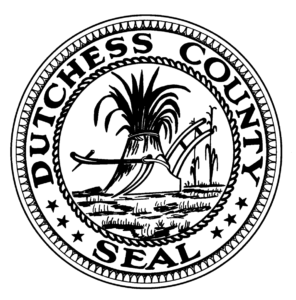
Water Advisory By the Order of the Dutchess County Department of Behavioral and Community Health
January 20, 2017 SHORE HAVEN WATER SYSTEM Public Water Supply # 1302807
Quarterly water samples were taken from the Shore Haven public water supply on 3/14/2016, 6/13/2016, 9/12/2016 and 12/13/2016, and analyzed for total haloacetic acids. The total haloacetic acid concentrations exceeded the state and federal drinking water standard of 60 parts per billion (ppb) total haloacetic acids as a running annual average. New York State and federal drinking water regulations require that when drinking water standards are exceeded, a notice be made to inform all drinking water customers of the exceedance, potential health risks, and measures being taking to correct the problem.
The presence of haloacetic acids at concentrations detected in the water system above the maximum contaminant level does not constitute an immediate health hazard. The standard is not a “bright line” between drinking water concentrations that cause health effects and those that do not, but is set at a water concentration at which exposure is much lower than exposures identified as causing health effects in animals. Thus, exceedance of the standard is not a trigger for health effects, but a trigger for water suppliers to take action to reduce the haloacetic acids concentrations and maintain what is already a large margin of protection against health effects. We therefore do not expect health effects to occur from normal use of the water.
What are Haloacetic Acids?
The United States Environmental Protection Agency (EPA) sets drinking water standards and requires the disinfection of drinking water. Haloacetic acids (HAAs) are formed in drinking water during treatment by chlorine (the most commonly used disinfectant in New York State), which reacts with certain acids that are in naturally-occurring organic material (e.g., decomposing vegetation such as tree leaves, algae, or other aquatic plants) in surface water sources such as rivers and lakes. The amount of HAAs in drinking water can change from day to day, depending on the temperature, the amount of organic material in the water, the amount of chlorine added, and a variety of other factors. Drinking water is disinfected by public water suppliers to kill bacteria and viruses that could cause serious illnesses. For this reason, disinfection of drinking water by chlorination is beneficial to public health.
What are the health effects of Haloacetic Acids?
Some studies suggest that people who drank chlorinated drinking water containing disinfection by-products (possibly including HAAs) for long periods of time (e.g., 20 to 30 years) have an increased risk for certain health effects. These include an increased risk for cancer. However, how long and how frequently people actually drank the water as well as how much HAAs the water contained is not known for certain. Therefore, the evidence from these studies is not strong enough to conclude that the observed increased risk for cancer is due to HAAs, other disinfection by-products, or some other factor. Studies of laboratory animals show that the individual HAAs, dichloroacetic acid and trichloroacetic acid, can cause cancer following exposure to high levels over their lifetimes. Dichloroacetic acid and trichloroacetic acid are also known to cause other effects in laboratory animals after high levels of exposure, primarily on the liver, kidney, and nervous system and on their ability to bear healthy offspring. The effects reported in studies of laboratory animals occur at exposures much higher than exposures that could result through normal use of the water. The risks for adverse health effects from HAAs in drinking water are small compared to the risk for illness from drinking inadequately disinfected water.
Steps Being Taken to Correct the Problem
Samples of the raw (untreated) well water are being analyzed to determine if there are changes to raw water quality that are impacting the effectiveness of the treatment program. Additionally, sampling through the treatment system and distribution system is being increased to help guide improvements to the treatment process. New well pumps and chemical feed equipment and controls being installed as part of the onging improvement project will allow for better control of the treatment process. Distribution system flushing will be implemented as weather and the ongoing improvement project allow. Additional Measures People Can Take Some people may wish to take additional practical measures to reduce their exposure. We do not consider these measures necessary to avoid health effects, but they are provided as options for those who may be especially concerned. They could: Use bottled water for drinking and cooking purposes. Use less water for bathing, showering or house cleaning which will reduce exposure from breathing vapors and through skin contact. Ventilate kitchen and bathroom areas (e.g., use exhaust fans or open windows) when using water to reduce the amount of chemicals in the air. Please share this information with all the other people who drink this water, especially those who may not have received this notice directly (for example, people in apartments, nursing homes, schools, and businesses). You can do this by posting this notice in a public place or distributing copies by hand or mail.
For further information please contact: Operator – Doug Odell (845) 486-3601 Dutchess County Department of Behavioral and Community Health (845) 486-3404

